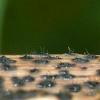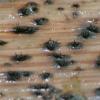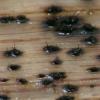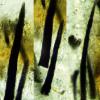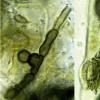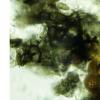
18-01-2020 19:03
 Bernard CLESSE
Bernard CLESSE
Bonsoir à toutes et tous,Une idée pour cet asco

20-01-2020 18:35
Could someone please give me a copy of the followi

20-01-2020 18:50
Stefan BlaserHello everybody, Any help on this collection is v

20-01-2020 07:30
 Django Grootmyers
Django Grootmyers
Growing on a dead, shrivelled portion of a Phlebia

15-01-2020 00:11
 William Slosse
William Slosse
Hallo Forum,I recently found a curious ascomycetes

19-01-2020 15:20
 Andreas Gminder
Andreas Gminder
Hello,on sheep dung after 14 days in culture I fou

19-01-2020 10:59
Didier ARGAUDUne question de mon ami Bernard Woerly qui voudrai
Asco indéterminé sur Urtica dioica
Bernard CLESSE,
18-01-2020 19:03
 Bonsoir à toutes et tous,
Bonsoir à toutes et tous,Une idée pour cet asco sur tige pourrie d'ortie (Urtica dioica) ?
Bernard
Martin Bemmann,
18-01-2020 19:12

Re : Asco indéterminé sur Urtica dioica
any micros?
regards
Martin
Bernard CLESSE,
18-01-2020 20:52
Bernard CLESSE,
18-01-2020 20:55

Re : Asco indéterminé sur Urtica dioica
And a very important element to report ! It was not on a rotten stalk of nettle (Urtica dioica) but on a rotten stem of meadow-sweet (Filipendula ulmaria) !
Bernard
Bernard
Luc Bailly,
21-01-2020 23:07
Re : Asco indéterminé sur Urtica dioica
Bernard, suis ça de près et cherche des conidies hyalines, des fois que ce serait un Colletotrichum. Des structures brunes sur ta 2eme photo micro m'y font penser.
Les conidies sont soit en bâtonnets soit en croissant de lune, et guttulées.
Bernard CLESSE,
21-01-2020 23:15

Re : Asco indéterminé sur Urtica dioica
Ah oui, excellente idée Luc !
Si je regarde
http://www.ascofrance.fr/recolte/4311/coleomycetes-colletotrichum-dematium#
c'est exactement la même macro. Je regarde cela demain !
Amitiés,
Bernard
Si je regarde
http://www.ascofrance.fr/recolte/4311/coleomycetes-colletotrichum-dematium#
c'est exactement la même macro. Je regarde cela demain !
Amitiés,
Bernard

